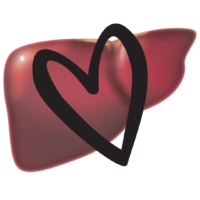Staying Fit in Menopause
Menopause fitness should be getting more attention than it does currently. What does being fit look like during menopause? What should we be doing to stay fit? Why do my workouts not work anymore? So many questions, so for the next three blogs, I will cover some basics of menopause fitness, starting with what functional fitness and high-intensity interval training are.
Functional Fitness
Functional fitness – gets thrown around a lot, but what is it? It makes sure we can function at our best – balance, agility, strength, power, and other adaptations. It is the capacity to carry out everyday functions. Functional fitness is essential, but even more so as we age. Sure, you can push out 18 miles a week and keep your cardiorespiratory fitness up, but those runs don’t keep the belly fat off in middle age. They can start to become a contributor. Think cortisol and stress. It is time to stop thinking about workouts as a weight-loss tool and instead look at them as building your functional capacity so that the weight loss can follow.
Workouts In Our 40s and Beyond
We have talked about how our hormones change starting in our 30s and continue to flatline in post-menopause. These hormonal changes, aging, increasing stress, and other factors cause us to store more subcutaneous fat, especially around our bellies. Suddenly, what you have always done to keep weight off – running, aerobic dance, bodybuilding, long slow cardio – isn’t working. So, you go harder, and your body rewards you by gaining more weight. You lose muscle. Your workouts gas you. Or maybe you have never had to work out to stay in shape, and now you have that belly pooch and fat in places it shouldn’t be. What gives?! You need a new menopause fitness plan.
Why Do We Workout
In general, any training or workouts we do should have a goal. They introduce a hormetic stressor (a good stressor) that our body adapts to by increasing blood flow capability to the muscles (including the heart), improving oxygen-carrying capacity and use, creating new muscle, strengthening bones, joints, ligaments and tendons, and numerous other adaptations. And OK, I guess it helps you burn calories. But the numbers are not what is important. What is important is the physiological, chemical, and psychological changes that exercise and training can bring.
What Should I Be Doing?
So, what types of training should I be doing for menopause fitness? We need three areas as we age with specific adaptations – high-intensity interval training (HIIT), strength, and plyometrics. Each of these contributes to you being the best you can be as you age – feeling good, moving good, sleeping soundly – being healthy, strong, and capable. Some of the common concerns I hear from women in their 40s and 50s is being able to keep up with their grandchildren or take care of elderly parents. Are you physically capable of this without hurting yourself? I talk a lot about how you cannot take care of others if you are not taking care of yourself, and this is a prime example of taking care of yourself. First up is HIIT.
High-Intensity Interval Training
So, let’s start with HIIT. HIIT stands for high-intensity interval training. HIIT is high-intensity bouts with lower intensity or rest periods between. We will talk about what those workouts might look like in a minute, but first, what is HIIT? HIIT is characterized by short, intense bouts of exercise with a subsequent active or inactive rest period. Endurance athletes have used HIIT-type sprints for years since they help improve running capacity. HIIT improves both our anaerobic and aerobic capacity. It doesn’t matter if you are sedentary or a recreational or highly trained athlete; HIIT can improve those pathways.
What can HIIT do for you as you age:
- Increases insulin sensitivity. Blood glucose control is improved with greater insulin sensitivity to counteract the loss of control with estrogen. When we have better blood sugar control, we have a much easier time controlling our weight and preventing chronic disease.
- Increases cardiovascular endurance from working at the top end of our capacity. Our oxygen consumption efficiency improves through the aerobic (oxidative) metabolic pathway. This also strengthens and improves many aspects of our cardiorespiratory health.
- Increases lipid turnover rates which is vital as we age since we don’t do this as readily. If we are not turning over the triglycerides in our fat cells, we cannot utilize fat as fuel as efficiently, so it will stay in storage. Also, without fat cell turnover, we store fat-soluble toxins rather than excreting them through our liver and detoxification pathways. This build-up over time is a stressor on our body.
- Improves the ability to pull glucose into recovering muscles. When we do short burst exercises for several minutes, we pull glucose from the blood and glycogen stores in our liver and muscles. Anytime our muscles need glucose or glycogen from storage, it is easier to obtain and process through the glycolytic and oxidative metabolic pathways when we train this way.
- Increases mitochondrial biogenesis, which creates new mitochondria, the powerhouses of our cells – this improves our muscle cell energy capabilities and enhances antioxidation and inflammatory processes.
- Increases Brain Derived Neurotropic Factor (BDNF) release after exercise for improved cognition, memory, and metabolism. BDNF is a neuropeptide important for brain health. For the peri- to post-menopausal female, we need all the cognition and memory help we can get!
- Improved vascular endothelial growth factor (VEGF) for improved blood vessel function and cardiovascular health. VEGF is essential for healthy endothelial cells.
- Helps us not store too much fat in the wrong places. HIIT seems to be particularly helpful in reducing trunk and upper leg fat deposits. Bye, bye menobelly!
- Increases the growth hormone response. Growth hormone production declines as we age, and HIIT has been shown to boost it.
- Increases testosterone. Yes, women need some testosterone too.
- Balances out estrogen swings. Bye, bye hot flashes!
- Balances cortisol. Yes, exercise is a stressor, but excess cortisol leads to the retention of belly fat storage. No thanks! Remember, cortisol is there to break down things to provide us energy. Too much cortisol will break down tissues that we need – like muscles, connective tissues, and the gut lining. Burst workouts with recovery are less stressful than long, intense workouts, so less cortisol release.
But I like my workout…
Why change your workout if you like it? Because when we only train in the same metabolic pathway, we become efficient, and further energy and oxygen use gains are limited. One way to overcome this is to train outside your normal pathway. An Olympic or powerlifter operating in the phosphocreatine pathway (anaerobic, all-out effort) can still benefit from improving the other pathways since this isn’t just about energy use. An endurance athlete can benefit by improving their cortisol response and replenishing glycogen stores faster by doing HIIT work. If you are a runner, try some HIIT sprints. If you are a lifter, try some HIIT with kettlebells or dumbbells.
Toss out those long slogs on the treadmill or bike and do some HIIT sessions instead. Wait, why no long/slow or medium intensity work? You might need several hours of medium-intensity work to get the benefits of two 20-30 minute HIIT sessions. And as mentioned, your cortisol spike from that medium intensity over time may be larger than the more intense bursts and rests of HIIT. So, efficiency and stimulus. Remember, we want stressors that our body can adapt to rather than be torn down.
How To HIIT It
Work
How do we do HIIT? There are two aspects, including length of work and rest. The length of work-rest cycles and the intensity of the rest cycle are debated, so the important part is the intensity of the work cycle and then utilizing some sort of rest in between where the heart rate recovers before another bout of work. Short, sharp bouts with rests is how Dr. Stacey Sims describes it. Dr. Sims is a menopause fitness expert and mainly works with athletes, but this is still important for us mere mortals. Intense work with recovery repeats all under 30 minutes total. You should be dying around 20 minutes. If you are still fresh at 30 minutes, you didn’t go hard enough.
Rest
Intervals can be between 20-90 seconds of 90-100% VO2max with variable amounts of rest. The rest can be active or passive but get below 70% of your VO2 max if you are a data person or feel recovered enough to go again with almost the same effort as before. The 90 seconds isn’t a rule either. Other studies have used time frames of 4 to 1-minute exercise and rest ratios. So, go as hard as you can, recover, go hard, recover, and repeat until you have met the goal. The work can include sprints, kettlebell swings, bodyweight movements, lighter bar cycling, pullups, and jumping. Basically, combos of anything that gets your heart rate up to that VO2 max paired with rest periods.
Next up – Strength Training
Now you know a little of why menopause fitness isn’t like it was in our 20s and 30s. Next up, we talk about moving heavy weights and how that fits into your menopause fitness goals.
Sources:
- Boutcher, Yati, Boutcher, Stephen, Yoo, Hye & Meerkin, Jarrod. (2019). The Effect of Sprint Interval Training on Body Composition of Postmenopausal Women. Medicine & Science in Sports & Exercise, 51, 1413-1419. https://doi.org/10.1249/MSS.0000000000001919
- Dupuit, Marine, Rance, Melanie, Morel, Claire, Bouillon, Patrice, Pereira, Bruno, Bonnet, Alban, et al. (2020). Moderate-Intensity Continuous Training or High-Intensity Interval Training with or without Resistance Training for Altering Body Composition in Postmenopausal Women. Medicine & Science in Sports & Exercise, 52, 736-745. https://doi.org/10.1249/MSS.0000000000002162
- MICT or HIIT ± RT could be proposed to nondieting postmenopausal women who are overweight/obese to decrease weight and whole-body FM. The HIIT programs were more effective than MICT in reducing abdominal/visceral FM. RT addition did not potentiate this effect but increased the percentage of muscle mass.
- Sex hormones and vascular responses: Hart EC, Charkoudian N, Miller VM. Sex, hormones and neuroeffector mechanisms. Acta Physiol (Oxf). 2011;203(1):155-165. doi:10.1111/j.1748-1716.2010.02192.x https://www.ncbi.nlm.nih.gov/pmc/articles/PMC3025263/
- Non-Specific review of HIIT for Endurance: Neels H, Tjalma WA, Wyndaele JJ, De Wachter S, Wyndaele M, Vermandel A. Knowledge of the pelvic floor in menopausal women and in peripartum women. J Phys Ther Sci. 2016;28(11):3020-3029. doi:10.1589/jpts.28.3020 https://link.springer.com/article/10.2165%2F00007256-200232010-00003
Talanian JL, Galloway SD, Heigenhauser GJ, et al. Two weeks of high-intensity aerobic interval training increases the capacity for fat oxidation during exercise in women. J Appl Physiol (1985). 2007; 102(4):1439–47.





